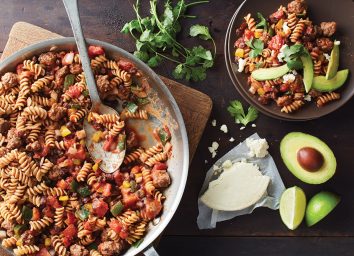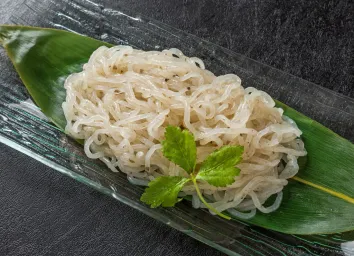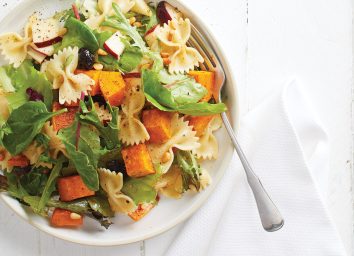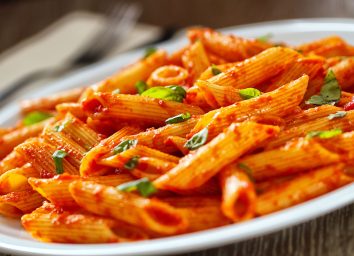The Single Best Way to Reheat Pasta You’ve Never Tried
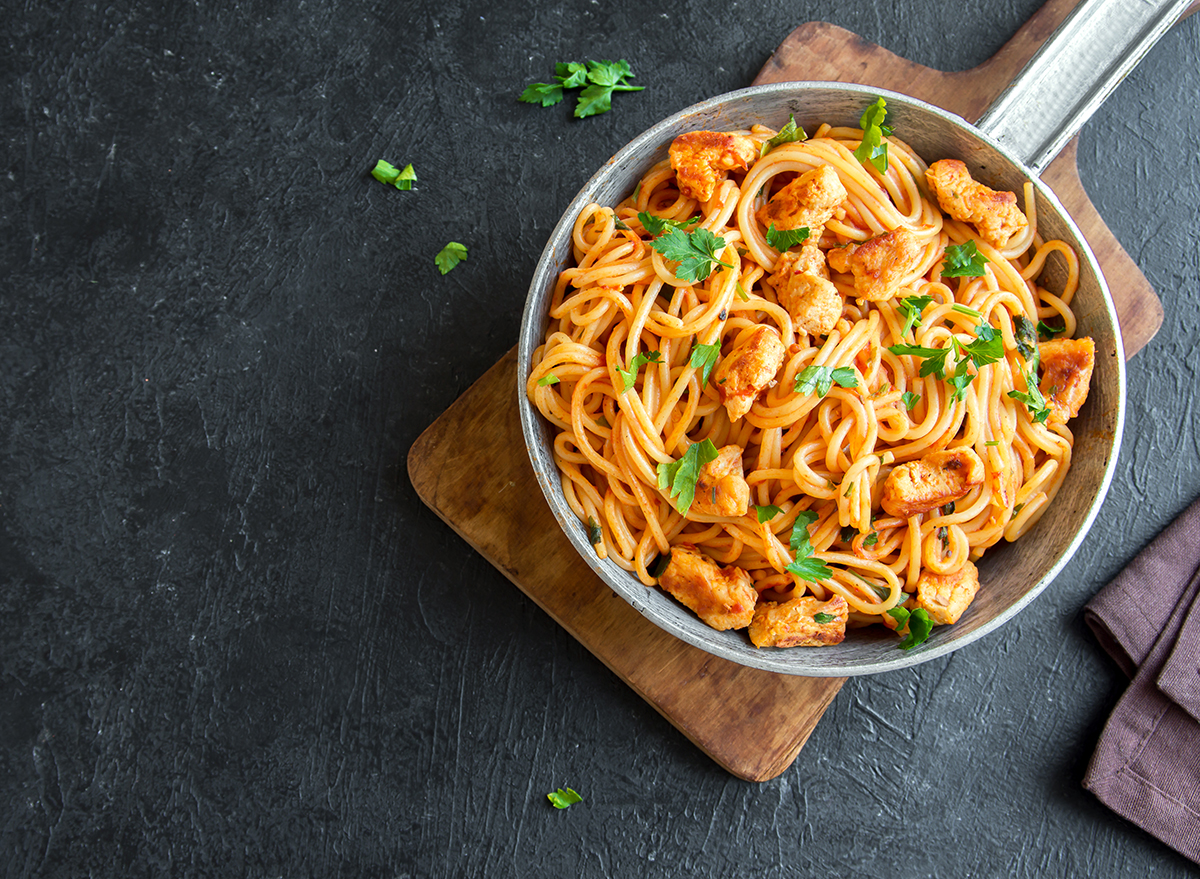
It’s the middle of the week, and you just made a delicious pasta dish—and plenty of it. Having leftovers of a rich bowl of pasta such as a creamy alfredo with soft linguine is a glorious thing. But have you ever reheated those once tender noodles and noticed they just don’t twirl around your fork as effortlessly as they did the day you prepared them? And how about the sauce—is it beginning to clump in pockets of the noodles as opposed to the thinner, creamier sauce that formerly blanketed them? Fortunately, we have the answers about how to reheat pasta the best way, so you never have to endure a sad bowl of leftovers again.
To avoid such an atrocity from occurring, we called on a professional in the kitchen, executive chef Bryan Forgione of Buddy V’s Ristorante in Las Vegas, to lend insight on how to properly reheat pasta so that it tastes nearly identical to the night you made it.
What’s the best way to reheat pasta?
Perplexed by my question, the chef jokingly says, “you should have eaten it all the first time around!”
While this is true—the taste of day-of pasta will always upstage that of day-two or day-three pasta—Forgione does have a trick that helps leftover pasta reproduce its original flavor and texture. Pasta has a lot of starch and will cause the sauce it’s in to thicken because it will soak up most of the moisture in the container. The trick is adding more moisture to the leftovers.
“Use a hot pan with a little bit of water or stock to loosen it up,” the chef instructs. When re-heating this way, make sure not to leave it on the stovetop for too long. Otherwise, the chef says, you risk over-cooking the noodles. In some cases, the noodle can even denature from the intensity of the heat, causing it to become mushy.
“If the pasta is right for it, like rigatoni or penne, you can turn it into an ‘al Forno’ style dish by loosening up the pasta with some stock, red sauce, or cream,” Forgione says. “Top it with mozzarella or fontina cheese, and bake the pasta in the oven.”
Forgione also points out that freshly made noodles will require more attention while reheating, versus noodles from a box.
“Most pasta from boxes are made with just flour and water [that’s] turned into a strong dough, then pushed through an extrusion machine. This pasta will be more resilient in comparison to a freshly made pasta, which will be more delicate,” he says. “As long as you don’t overdo it when reheating the pasta, you can get away with either type of pasta and make a great second meal.”
How can you keep gluten-free pasta from drying out the next day?
“Gluten-free pasta does not hold up well at all,” says Forgione. “Microwaving it is probably the best way to keep it from falling apart.”
Gluten is the naturally-occurring protein found in wheat and wheat-containing products such as flour. The protein acts as a binding agent in the noodle; without it, the noodle loses structure durability. There are substitutions for gluten such as guar and xanthan gums, but oftentimes, there’s a noticeable difference in texture.
Should you always separate noodles from the sauce if you plan on saving it for the next day?
“If you have the ability to keep the sauce separate, then yes, separate it, as the starches from the pasta will thicken up your sauce when they are cooked together,” says Forgione.
Which type of noodle reheats the best?
Thicker noodles such as rigatoni will naturally hold up better, the chef says. “Also, if your pasta was cooked al dente initially, your chances are better at successfully reheating,” he adds.
What pasta recipes are the best for meal prepping?
“Baked pastas like baked ziti or lasagna are good for heating up, or just [eat them] cold from the fridge with hot sauce,” says Forgione.
Now you should be well-equipped to reheat pasta in such a way that it retains its structure and flavor. The key? Don’t reheat the dish for longer than it needs. Instead, apply just enough heat, whether that be in the microwave or on the stovetop until it’s fully warmed.
